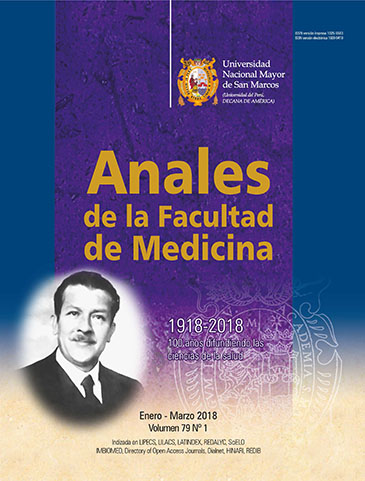Clinical practice guideline for the diagnosis and treatment of hemophilia for the Peruvian Social Security (EsSalud)
DOI:
https://doi.org/10.15381/anales.v79i1.14598Keywords:
Hemophilia, Practice Guideline, Evidence-Based MedicineAbstract
Introduction. Hemophilia is a rare congenital bleeding disorder; which requires interdisciplinary, complex, and often expensive management. The objective of this clinical practice guideline (CPG) is to provide evidence-based clinical recommendations for the evaluation and management of patients with hemophilia in the Peruvian Social Security (EsSalud). Methods. A local elaboration group (GEG-Local) was established, conformed by specialists in hematology and methodologists. The GEG-Local formulated 8 clinical questions to be answered by this CPG. We searched for and selected hemophilia CPGs that answered the questions posed and obtained a score higher than 60% in domains 1 and 3 of the Appraisal of Guidelines for Research and Evaluation II (AGREE-II). During 2016, bibliographic searches were conducted in Pubmed, EMBASE and the Cochrane library, to update 7 clinical questions of the preselected CPG, and to answer a question de novo. In regular work meetings, the GEG-Local reviewed the evidence and formulated the recommendations and flowcharts using the Grading of Recommendations Assessment, Development, and Evaluation (GRADE) methodology. Finally, the CPG was approved with Resolution No. 32-IETSI-ESSALUD-2016. Results. This CPG addressed 8 clinical questions. Based on these questions, 22 recommendations were formulated (three strong recommendations and 19 weak recommendations) and four flowcharts. Conclusion. This article is the summary of the EsSalud CPG, in which the available scientific evidence on the diagnosis and treatment of hemophilia was assessed.Downloads
Published
2018-06-07
Issue
Section
Guías de Práctica Clínica
License
Copyright (c) 2018 Anales de la Facultad de Medicina

This work is licensed under a Creative Commons Attribution-NonCommercial-ShareAlike 4.0 International License.
Those authors who have publications with this magazine accept the following terms:
- Authors will retain their copyrights and guarantee the journal the right of first publication of their work, which will be simultaneously subject to Creative Commons Attribution License that allows third parties to share the work as long as its author and its first publication this magazine are indicated.
- Authors may adopt other non-exclusive licensing agreements for the distribution of the version of the published work (eg, deposit it in an institutional electronic file or publish it in a monographic volume) provided that the initial publication in this magazine is indicated.
- Authors are allowed and recommended to disseminate their work over the Internet (eg: in institutional telematic archives or on their website) before and during the submission process, which It can produce interesting exchanges and increase quotes from the published work. (See El efecto del acceso abierto ).
How to Cite
1.
Mendoza Ordoñez S, Loayza Urcia N, Trujillo Cerna M, Herrera Cunti C, Yanac Avila R, Ormeño Apaza W, et al. Clinical practice guideline for the diagnosis and treatment of hemophilia for the Peruvian Social Security (EsSalud). An Fac med [Internet]. 2018 Jun. 7 [cited 2025 Jun. 6];79(1):83-9. Available from: https://revistasinvestigacion.unmsm.edu.pe/index.php/anales/article/view/14598



